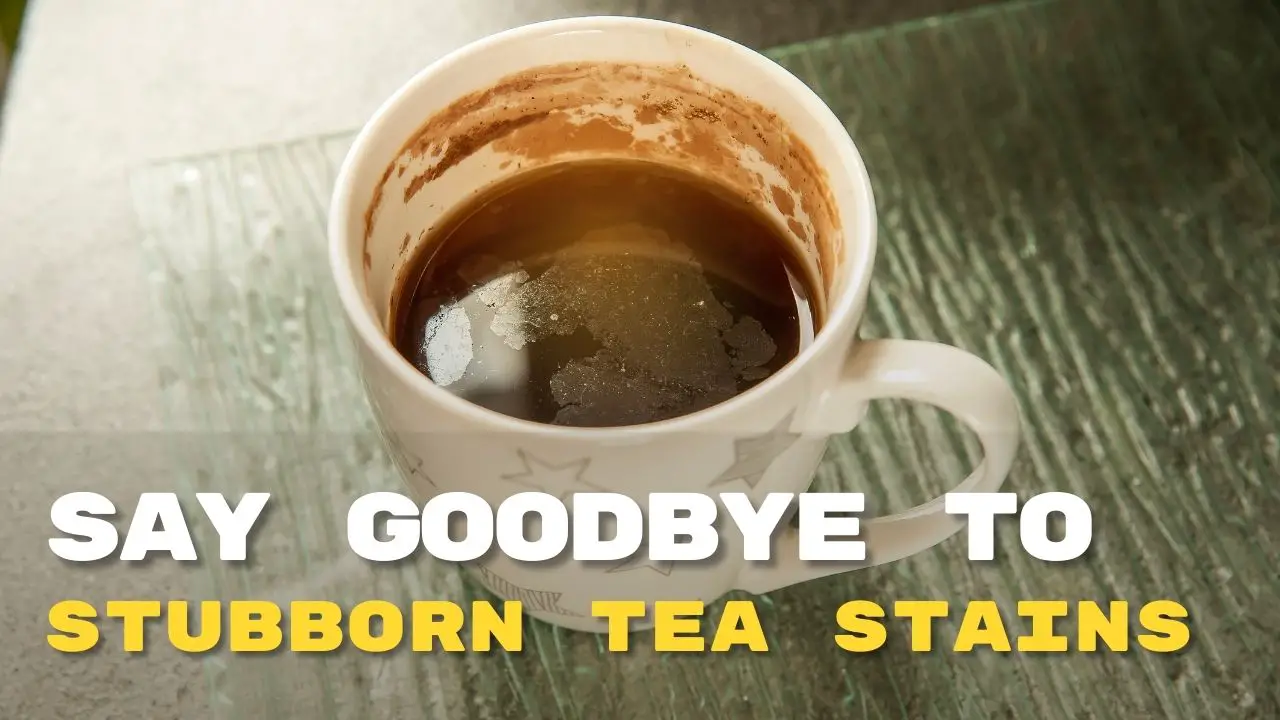Whether you drink your tea freshly brewed and hot or as a cold iced tea, chances are, you’ve come across one particularly frustrating problem, your mug or teacup is getting darker and darker with each brew.
Indeed, it is a sad fact of life; most teas do stain your mug.
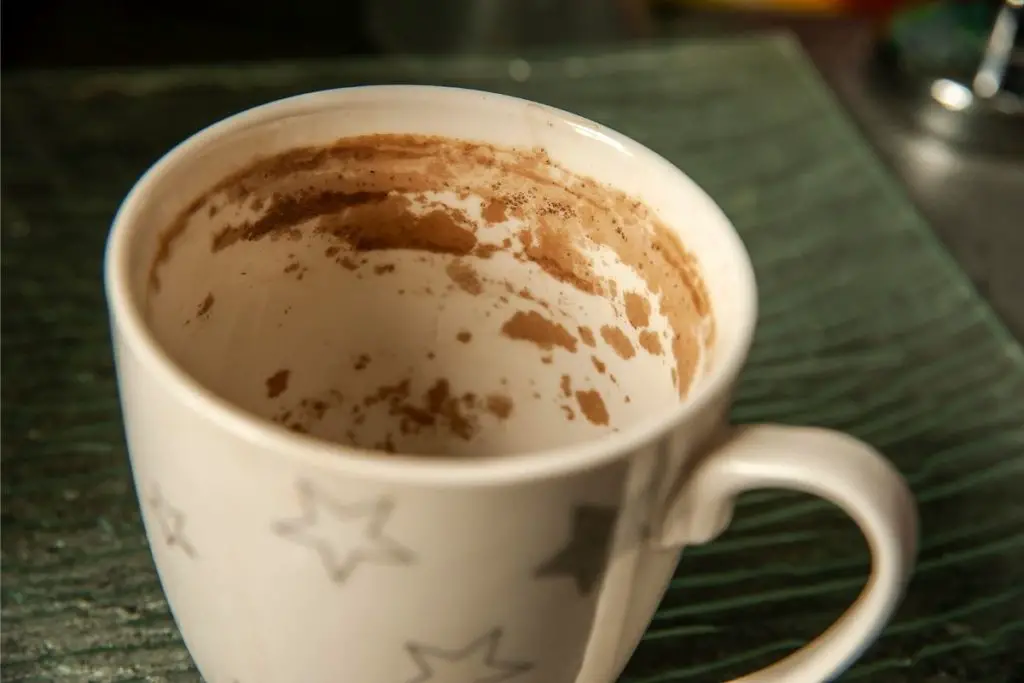
Fortunately, though, you don’t need to live with this ugly brown residue on your favorite mug. In fact, there are numerous excellent methods that will help you to remove tea stains from cups and mugs without using any harsh chemicals or throwing the cup away altogether.
Here is how to clean your mug and teacup easily and effectively and some tips and tricks to prevent tea stains from developing in the first place.
Why Does Tea Stain Cups And Mugs?

What is it about the tea that is gradually resulting in discoloring and staining our mugs and cups that a simple rising and dish soap won’t resolve?
Tea stains mugs because it contains tannins which are natural compounds responsible for giving the tea its bitter flavor and yellowish-brown color. When tea is brewed, the calcium carbonate in the tap water binds with the tannins in the tea, forming an insoluble substance that settles on the insides of cups, mugs, and teapots.
Tannins are also found in many other beverages and foods, such as coffee, red wine, berries, and even blackstrap molasses, all of which are known to stain dishes, cutlery, or even your teeth.
Which Tea Does Not Stain?
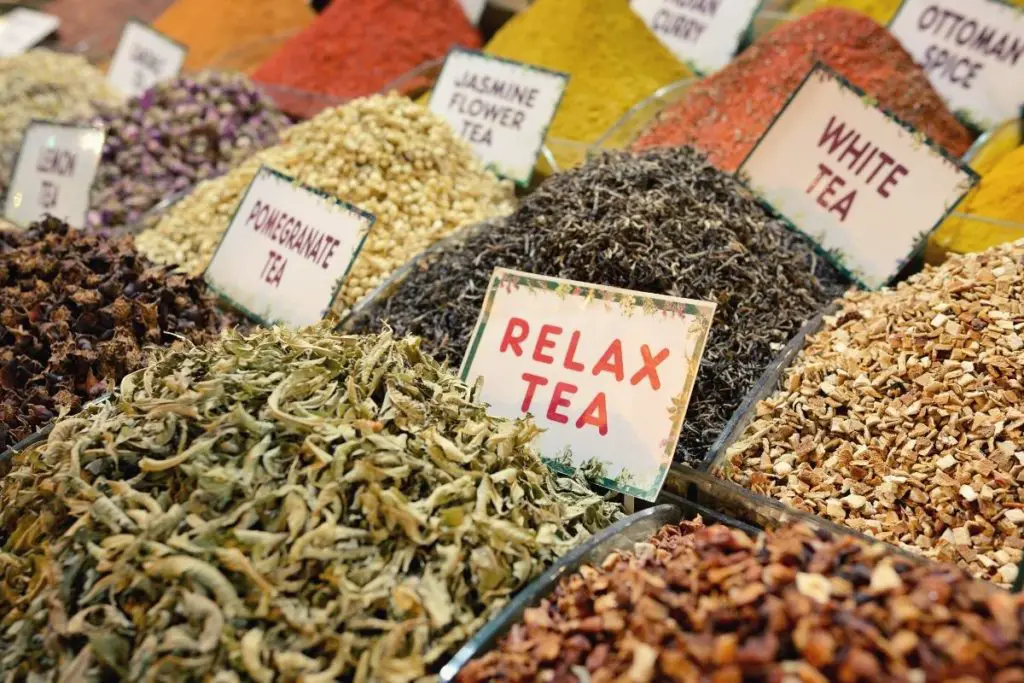
Different teas have different levels of tannin and therefore stain and discolor your mugs at various degrees. Most tannin is found in black tea, followed by oolong and green tea, while white tea has the lowest tannin levels.
Many herbal teas (also known as infusions or tisanes) can also contain tannins and stain your mugs. Infusions like chamomile, nettles, hibiscus, peppermint, guarana, cinnamon, turmeric, rosehip, orange peel tea, and yerba mate are shown to contain a low level of tannins.
The only teas that I can think of that don’t stain your mug are rooibos and ginger tea. But even then, when it is blended with green tea or other infusions, it can still stain your cups and mugs.
5 Effective Ways To Remove Tea Stains From Cups
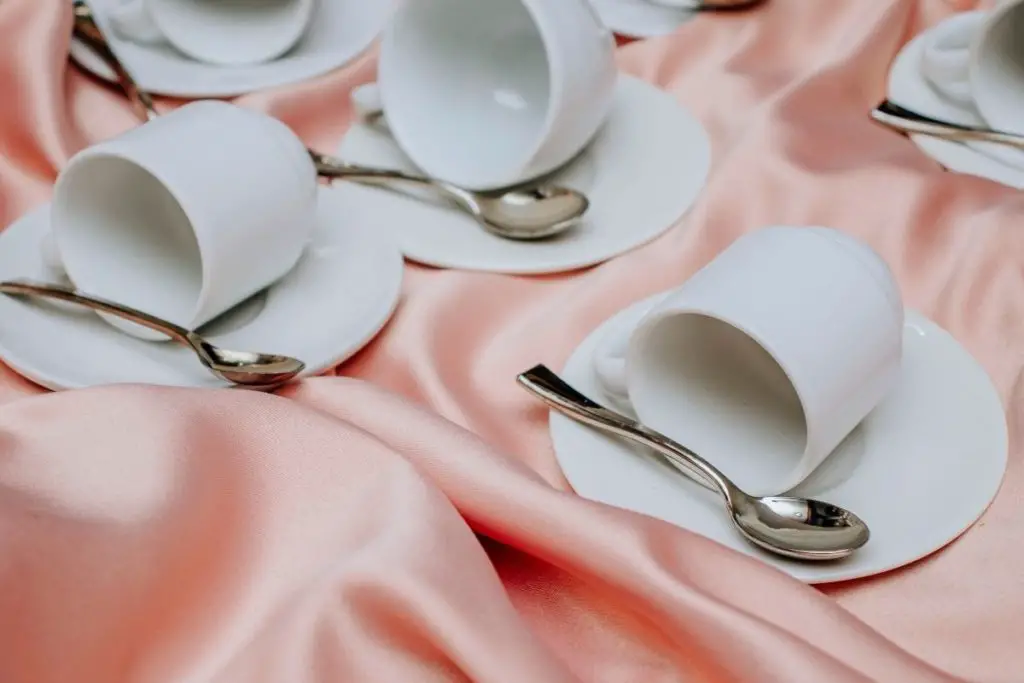
Tea stains can be a nuisance and often difficult to remove, especially if left to build up for some time. Luckily, there are some simple and effective methods for removing these pesky stains for good or at least till your next brew.
You can also improvise and combine some of these cleaning methods below depending on the ingredients you have available in your kitchen cupboard or under the sink.
1. The Salt Method
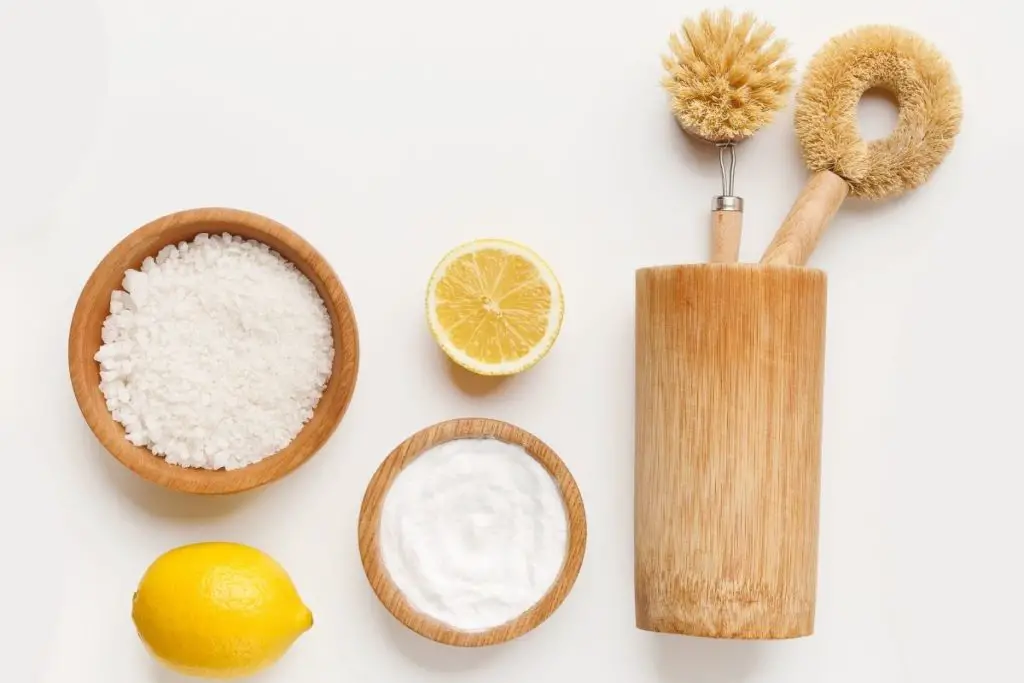
If your mug has a very mild stain, all you may need to do is use table salt and concentrated lemon juice!
Simply mix the two together until you have achieved a paste-like consistency. Then apply it to the mug with a sponge or dishwashing cloth.
Check out the video below, where I will show you how effortlessly this combination removes the tea stains for your cup.
For a deeper clean and better scrubbing, a Mr. Clean Magic Eraser may be a good investment!
I should note that when dealing with long-neglected stains, whichever cleaning tool you use will likely get heavily stained once you have cleaned your cup. So preferably, use one that can be disposed of afterward.
Once you’ve removed the stains, simply rinse away any residue with warm water. This method works best for light tea stains!
2. Using Baking Soda And Hydrogen Peroxide Solution
TAP ON IMAGE TO VIEW PRICE
This solution also works well if there isn’t too much of a stain and you’re looking to stay on top of stain control for your favorite tea mug.
Still, it should be noted that baking soda will not help as much when it comes to darker-colored stains since it is only a very gentle abrasive.
However, since baking soda is only a mild abrasive, you can safely scrub the surface of the more delicate mugs and cups without causing any damage.
Simply mix baking soda with Food Grade Hydrogen Peroxide to form a thick paste. Apply it to the mug and let it sit for about 15 minutes before scrubbing away gently with a sponge, old toothbrush, or rag. Rinse clean and allow to air dry.
3. The Toothpaste Method
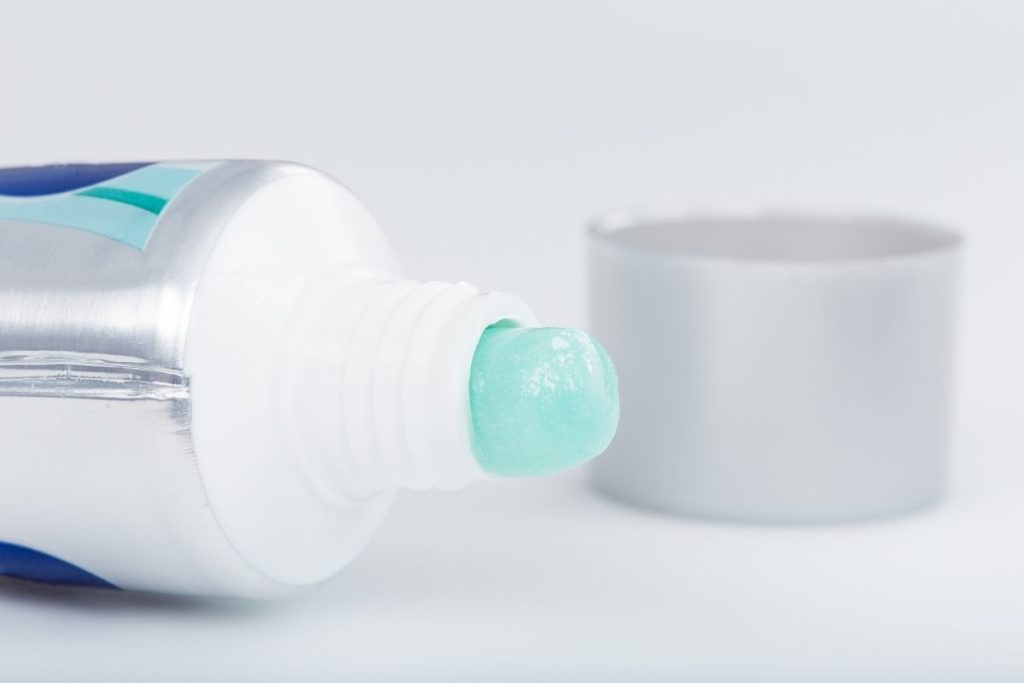
Toothpaste is excellent for cleaning teeth, but it also works surprisingly well for cleaning tea and coffee stains from cups and mugs. Especially if the stains are more stubborn, micro granules whitening toothpaste can be a great option!
Just apply some toothpaste directly to the stain, using an old toothbrush, sponge, or rag to help work it in. Let it sit for 5-10 minutes before rinsing off thoroughly with warm water.
If there is still some discoloration, repeat the method or try other cleaning methods on this list.
4. The Vinegar Method
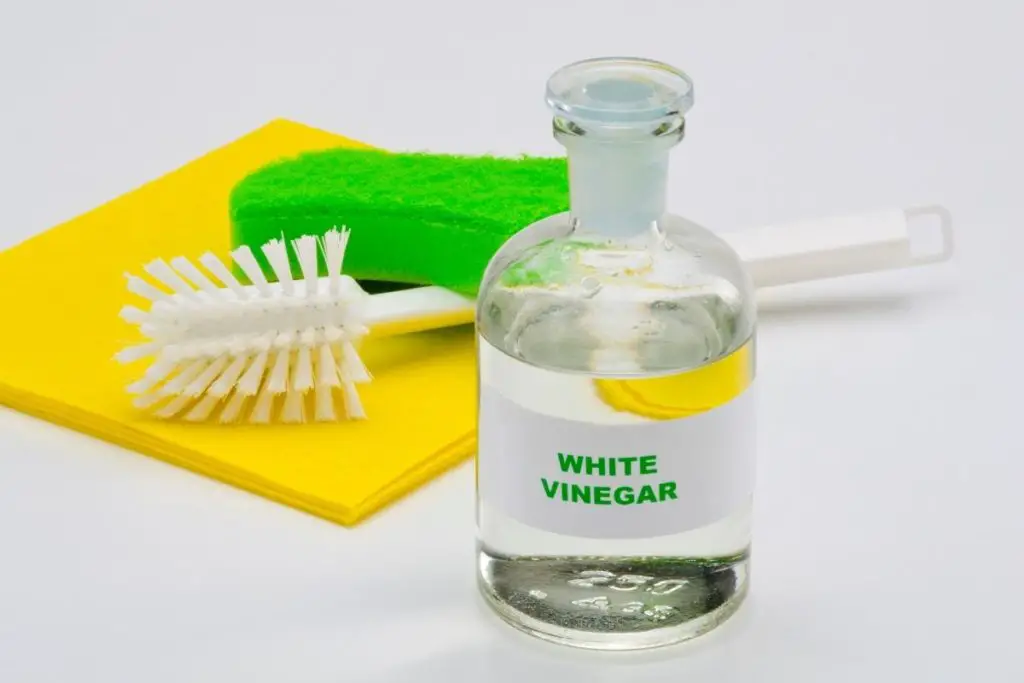
For surface tea stains that need to be removed without scratching the inside of the mug, Natural Distilled White Vinegar may be necessary.
Fill the mug with equal parts of vinegar and cold water and let it sit for about 15-20 minutes before rubbing it away with a sponge or cleaning cloth. Rinse well with warm water.
5. The Dishwasher Liquid Method
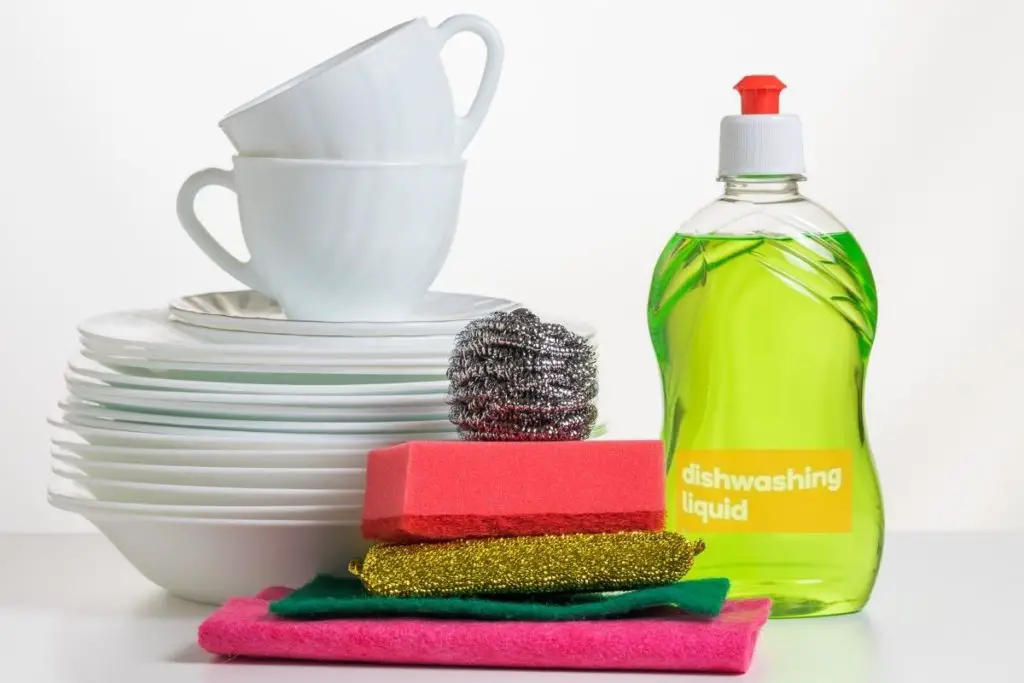
The dishwashing method can absolutely offer a great and incredibly simple solution to power away these stuck-on stains. So, you might want to buy some Dishwasher Detergent Liquid Gel, even if you don’t have a dishwasher!
Fill one-quarter of your mug with dish dishwasher detergent and give the stains a good scrub with a sponge. Then run hot water into the mug and leave to soak for around half an hour to an hour.
Then, scrub away at the stains until they vanish entirely, and you should be left with a shining cup once again! Simply rinse and dry, and return to using your cup as usual.
How To Clean Tea Stains From Stainless Steel Travel Mug?
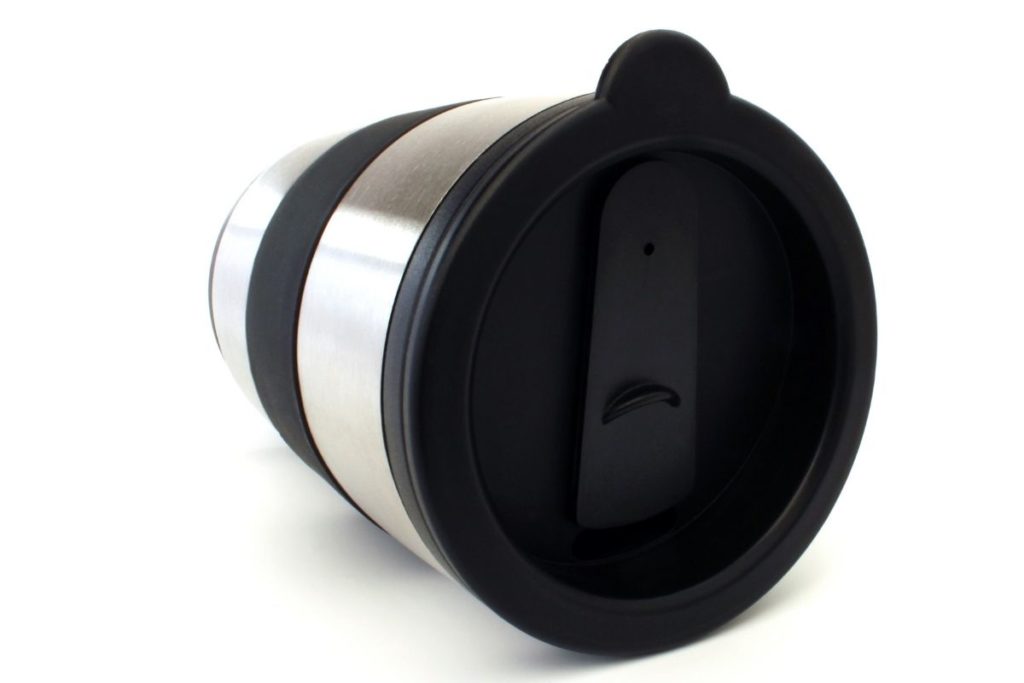
What about your favorite stainless steel travel mug?
More and more of us are reaching for these convenient on-the-go vacuum-insulated drinkware that can keep your beverage hot for hours and hours. Still, there’s a catch – they’re tall and narrow, and cleaning them can be a lot trickier.
TAP ON IMAGE TO VIEW PRICE
Stainless steel is a great material to use for tea and coffee mugs, but even the best quality one can develop stains from your hot brew.
There are a few methods to clean stainless steel travel mugs; most of them are pretty similar to the cleaning methods above.
1. Baking Soda And Vinegar
These are a dynamic duo when it comes to household cleaners and also works well on your stainless steel travel mug.
Both of them work well separately, and together, they function as a natural cleaner that will cut through stains and break up any residual tea or coffee stains without having to scrub hard and try to reach the bottom of the mug.
If you don’t have vinegar on hand, you can also use lemon juice.
Here is how to do it:
- In a medium-sized container, add a tablespoon of baking soda and then pour in the vinegar. It will foam.
- Pour into the travel mug and then swirl around to mix the two ingredients. Let the mug sit for a few minutes to allow the cleaner to work.
- Use a bottle or scrub brush to clean the inside of the mug. You should notice the stains lifting.
- Pour out the cleaning solution and then rinse with hot water.
You can do this on a regular basis to avoid stains from building up.
2. Dishwasher Detergent
This is another great method I already mentioned above and can also be used for your stainless steel travel mugs. You’re going to need near-boiling water though, so make sure that you put on gloves before you start.
- Put the stainless steel mug in the sink and drop in two tablespoons of dishwasher gel. Gel or liquid are both okay.
- Pour the boiling water into the mug.
- Wait for 30 minutes in order for the cleaner to take effect and remove the stains.
- Then scrub the inside of the cup with a bottle brush if you have one. Once the surface is clean, empty it out and rinse it thoroughly before using it.
3. Hydrogen Peroxide And Baking Soda
This is the final option that can work if the first two cleaning methods still don’t give you the spotless, stain-free clean that you want.
Hydrogen peroxide is a super cheap, widely used, ultimate household cleaner and should be under everyone’s sink.
Here is how to do it:
- Put about 5 tablespoons of baking soda into the travel mug, and then fill it with hot water.
- Scrub the inside of the mug and then rinse it well and dry.
- Then fill one-quarter of the mug with hydrogen peroxide.
- Swish the mixture around to coat the walls of the mug and then fill the rest of the mug with water.
- Wait for 30 minutes and rinse well with hot water to remove any residue.
The recommended dilution ratio for sanitizing and cleaning is 2.5 parts water and 0.5 parts 3% hydrogen peroxide. Hydrogen peroxide may be harsher on your skin, so make sure to wear gloves.
4. Denture Cleaning Tablets
This last clever cleaning hack that you might have seen on TV uses denture cleaning tablets to clean your travel mug. Denture tablets are made of natural ingredients, and they can remove even the most stubborn stains, plaque, and bacteria from the mugs.
The process is simple:
- Fill the mug with warm water.
- Add a denture tablet.
- Before rinsing with fresh water, let it rest for 30 minutes, preferably even overnight.
Cleaning Methods To Avoid For Stainless Steel Travel Mug
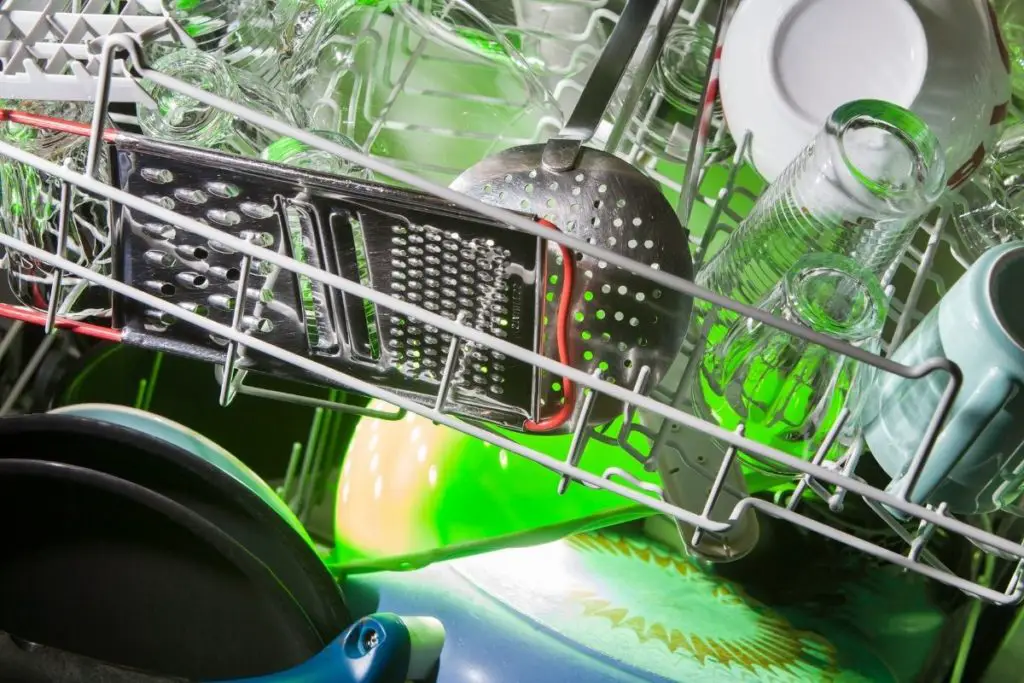
There are a few cleaning tools and methods that you shouldn’t use for your stainless steel travel mug. These can lead to rust, discoloration, or breaking down the vacuum insulation and the leak-proof elements of the container.
1. Don’t Use Dishwasher
Although stainless steel is dishwasher safe, most stainless steel travel mugs are NOT. The main reason is the mug’s vacuum-sealed inner and outer layers, rubber and plastic parts, leak-proof components, or chemical coating. The dishwasher creates pressure and heat that can damage parts of the travel mug.
However, if your travel mug has a symbol or label that says “dishwasher-safe,” you can put it in the dishwasher.
2. Don’t Use Bleach
Household bleach is a popular option, but it contains sodium hypochlorite. This is an oxidizing agent that will remove the chromium oxide from the stainless steel. Once it’s released, you can end up with rust and have certain metal components released into your drink.
3. Don’t Use Metal Brushes Or Scourers
Another common problem is using metal brushes or scourers on your mug. Steel wool or wire sponge is great for cleaning milk burnt pots or rescuing your oven-burned pans, but it can scratch the more delicate metal surface when used on stainless steel travel mugs.
These scratches will then lead to stain magnets where the tea and coffee can’t be easily scrubbed out anymore and may also lead to rusting.
How To Clean Travel Mug Lid?
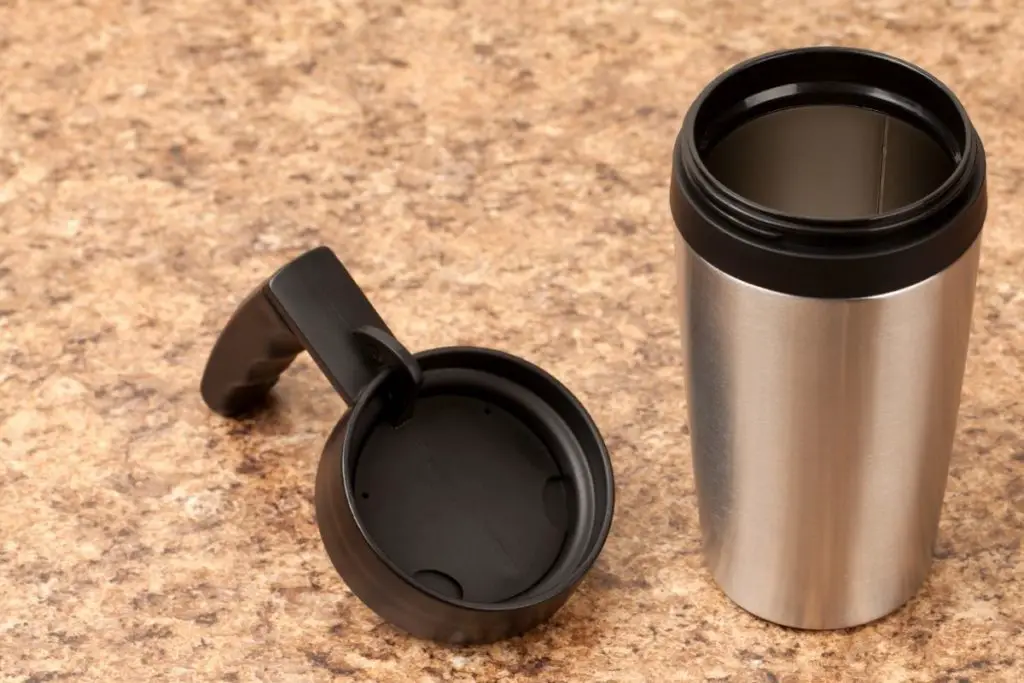
The lid of your travel mud is probably made of polypropylene, which is the most common plastic used for most food storage lids. This lid will usually have various different parts and many small and hidden spaces that need to be cleaned.
You can wash the polypropylene lid in the upper part of the dishwasher or rinse it out by hand between each use. A simple water rinse will be sufficient if you use the mug only for plain tea or plain black coffee.
Suppose you use milk, cream, sugar, stevia, or other sweeteners in your tea and coffee. In that case, you need to probably take more care cleaning the lid and make sure that there is no unwanted residue left in the small nooks and crannies of your lid.
If you’re concerned it’s not getting clean enough, your best option is to periodically soak the lid in a mixture of baking soda and vinegar. Rinse it out under hot running water after soaking, and you’ll be ready to go, literally and figuratively.
Is It Safe To Clean Mugs And Cups With Bleach?

While bleach is considered safe and highly effective for sterilizing your dishes, forks, and other cutlery, its ability to remove stains could be a little less.
As such, to get the best results from bleach, you may also need to use baking soda, salt, or any of the other cleaning methods above before bleaching.
Avoid mixing bleach with any other cleaning product to avoid an unintentional chemical reaction.
To use bleach to clean and sanitize your mug and cups (except the travel mugs), I recommend the following steps:
- Fill a small bowl or kitchen sink with cold water (NOT hot water) and add bleach, about 1 tablespoon of bleach per 1 gallon of water. Take care not to splash any on your skin or eyes; use gloves or goggles if possible.
- Immerse the stained mug in the bowl or sink and let it soak for 5 minutes.
- After 5 minutes, remove the mug and rinse thoroughly with cold water.
- Dry the mug with a soft cloth or paper towel.
Instead of using bleach to serialize your dishes and cutlery, Check Out How to Make Your Own Natural Grease-Cutting, Germ-Killing Dish Soap.
How To Prevent Tea Stains In Cups?
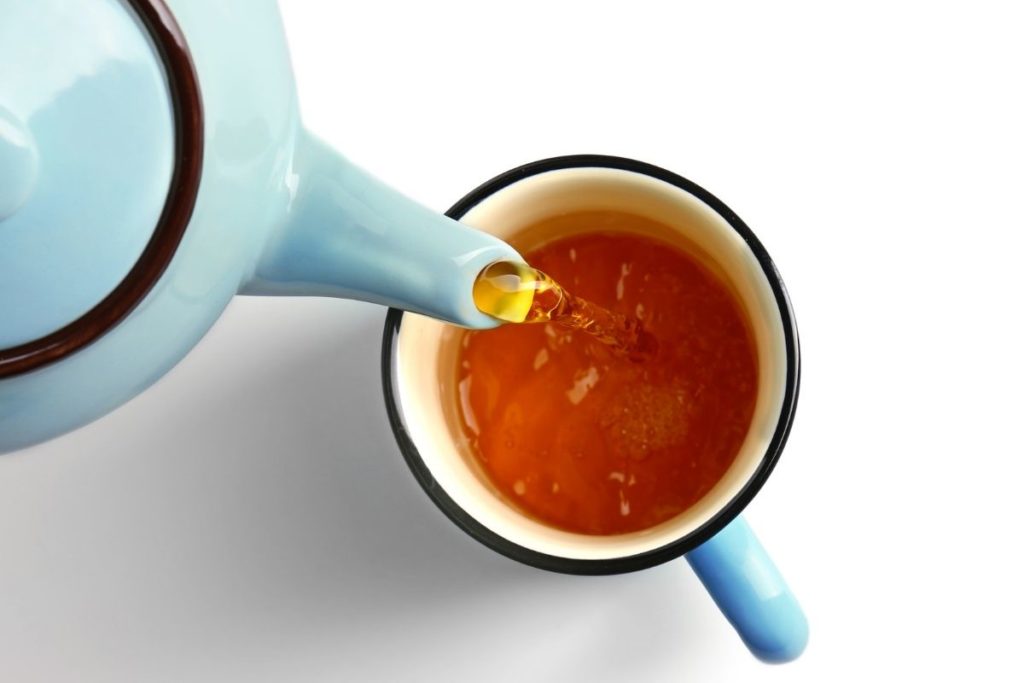
Coffee and tea mugs always seem to end up staining after a few days or weeks of use. There are some steps that you can take to prevent this from happening, which will save you from constantly scrubbing them.
As such, I have summarized 4 simple preventative steps you can take to stop tea stains from taking hold of your mugs in the first place.
1. Use Pure And Soft Water
The rate at which your teacups get stained depends on the quality of the water you use to brew your tea.
Not only will “hard” water full of iron and manganese leave behind stains, but it also has a high concentration of limestone (calcium carbonate).
The calcium carbonate in the water forms chemical bonds with the tannins in the tea, forming that brown insoluble substance that you will notice deposited on the insides of your cups and mugs after drinking.
To prevent tea stains in cups, use “soft” water that has less calcium to react with the tannins in your tea that cause the dark and hard-to-clean stains inside tea cups and mugs.
The cheapest and easiest way to clean your water is to use filter pitchers like the one below. It has an activated carbon fiber filter that can get rid of most impurities, like heavy metals, limescale, chlorine, mercury, and pesticides that you get from inadequately treated tap water.
TAP ON IMAGE TO VIEW PRICE
This filer pitcher can also eliminate chlorine taste and odor, which can be an extra benefit for any serious tea or coffee aficionado.
2. Add Some Milk To Your Cup Of Tea
The next tip may not be everyone’s cup of tea, but it does work.
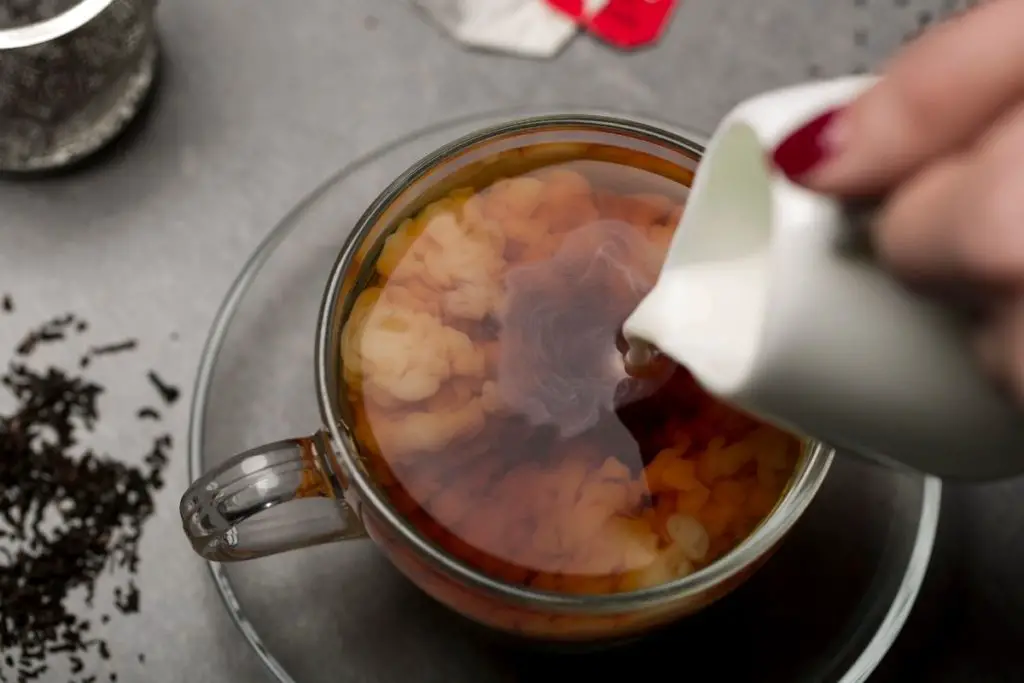
Drinking your tea the ‘British way’ with milk could help prevent stains from forming so quickly. The proteins in the milk can effectively tie up the tannins, preventing them from binding together with the calcium in the water and inhibiting the tea staining of the cups.
3. Don’t Leave Tea Bags In A Cup
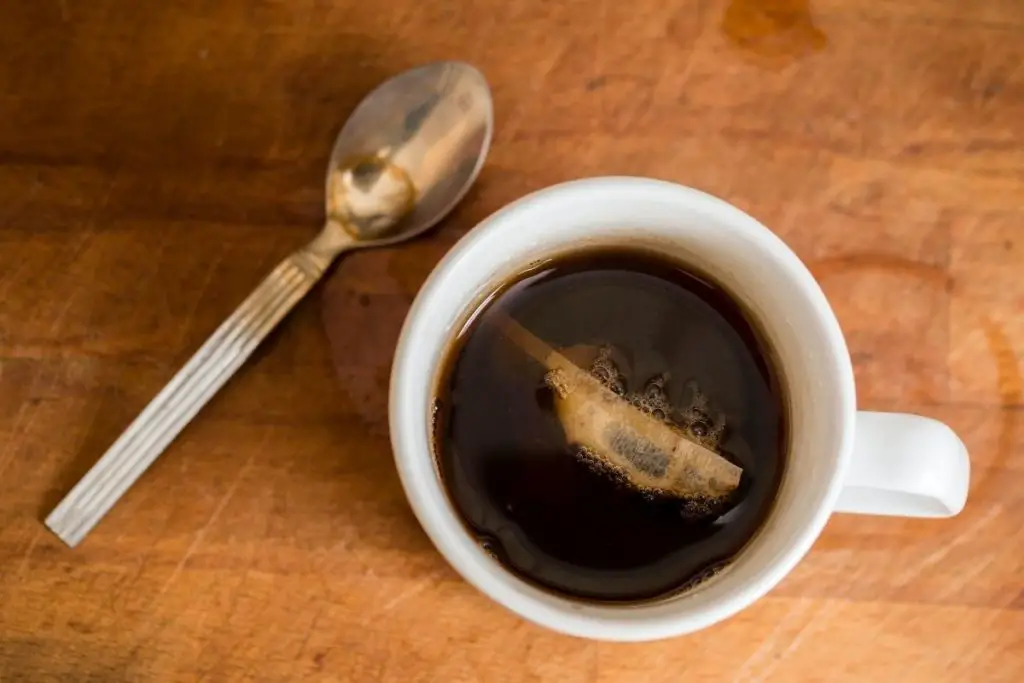
A common mistake that many people make is to leave a teabag in the cup or leave a half-finished cup of tea to sit there. However, this will drastically increase the chances of staining.
So, follow the recommended brewing times, and don’t steep your tea for too long in hot water. Not only will it certainly stain the cup, but it will also give a bitter taste to your brew.
Once done drinking, discard any leftovers and rinse your cup straight away.
4. Clean Your Mug Or Cup After Drinking
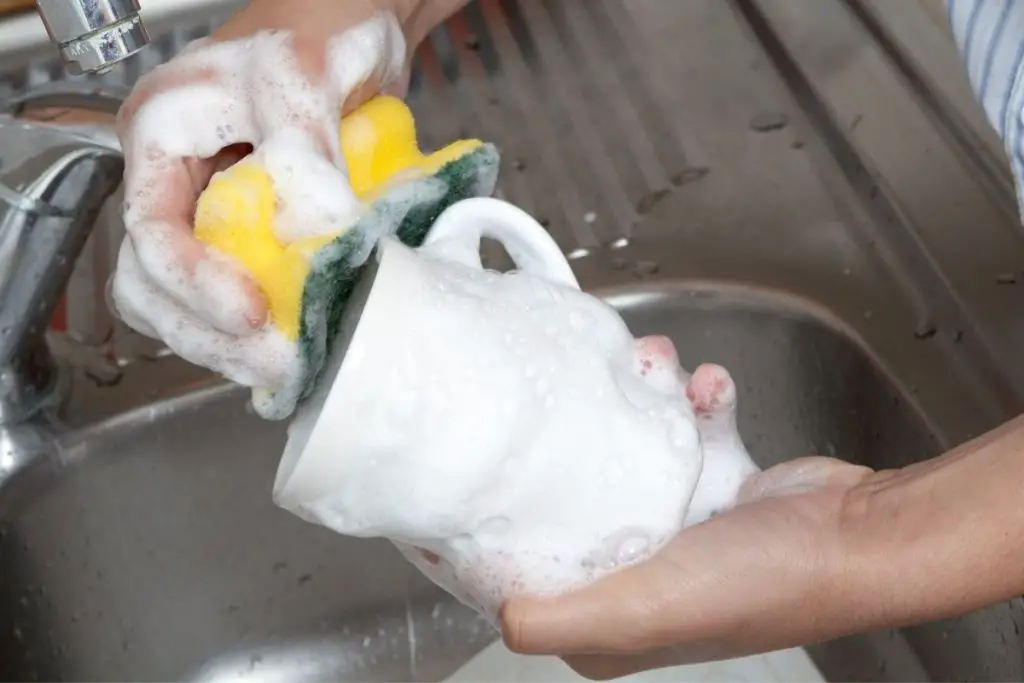
Always clean your mugs on a regular basis, preferably after each drink, with warm water, dish soap, and a sponge. This simple cleaning will help prevent the build-up of stains and discoloration over time – after all, it’s much harder to remove a stain once it’s established.
At a bare minimum, if you don’t have time to thoroughly clean your mug, empty any residue and rinse it, and give the cup a more thorough clean at the first possible opportunity.
Some of these stain prevention tips can be pretty effective, but since we are on it, we should go a step further and look into some materials that are staining a bit less than others.
Types Of Mugs That Stain The Least

The type of mug you buy will play a significant role in the staining potential. As such, it’s always important to do your research before buying a new tea mug to ensure you’re getting a cup that won’t stain that easily.
However, it’s worth noting that even stain-resistant mugs may still stain over time. So, it is a good idea to follow the tips above to prevent stains from building up in your favorite mugs.
Some of the most stain-resistant mug materials include:
- Plastic
- Porcelain
- Glazed Ceramic
- Glass
Buying brown or black colored cups is another option to get around the staining issue but that would only help you disguise the problem and make it less visible and not really prevent the stains from forming.
Is it Safe To Drink From A Tea-Stained Mug?

For all you slacker and sluggard out there, it is perfectly safe to refill your dirty tea-stained mug.
So, fortunately, the answer is, on the whole, is yes. Indeed, though looking unsightly, tea-stained mugs won’t harbor any more bacteria than an unstained mug if cleaned with hot water and dishwashing liquid.
As such, while a stained mug won’t look overly nice, they aren’t going to be any more prone to bacterial build-ups than a pristine mug.
How Often Should I Wash My Tea Cups?
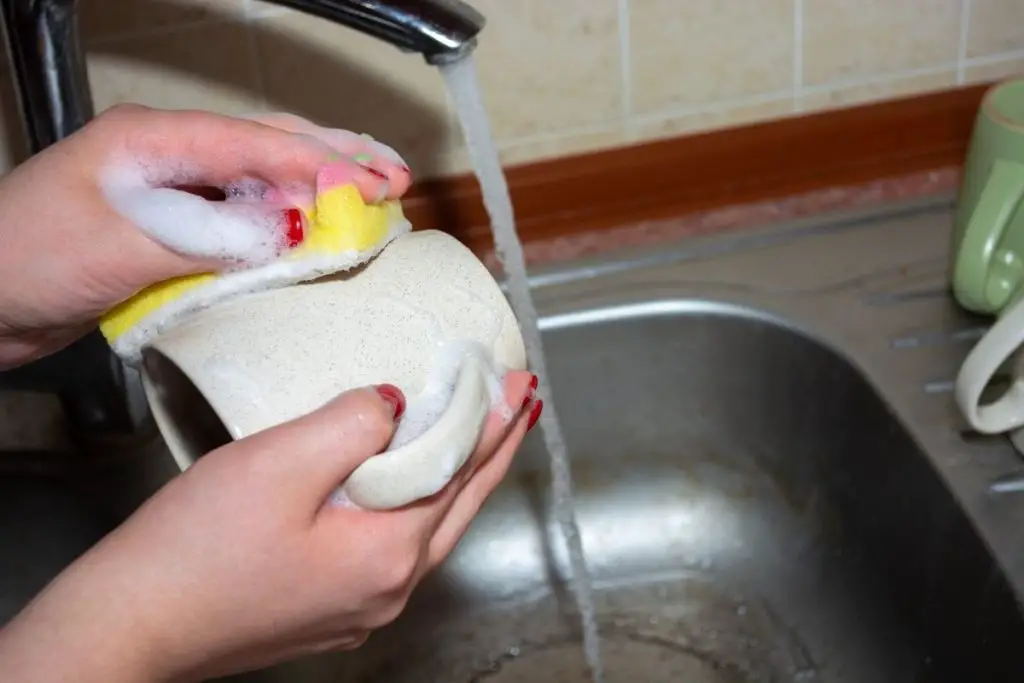
This will depend on your time availability and your personal cleanliness level. Still, in an ideal world, you should wash your tea mug after every use. This will keep the cup hygienic and help prevent stains from building up.
Failing that, at the bare minimum, you should rinse the cup immediately under the running water after each use and wash it at the first possible opportunity to prevent more stubborn hard-to-clean stains from forming.
Final Thoughts
Every day, millions of people drink coffee or tea from the same dirty cup. The thought of this may gross you out, but it is actually very common around the world.
Although the stained mug won’t necessarily hurt you and has probably saved you countless hours of scrubbing and cleaning, then having said that, a cup of tea or coffee can be enjoyed so much more when it is clean.
So, give it a little scrub; it is easier than you think.
